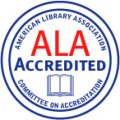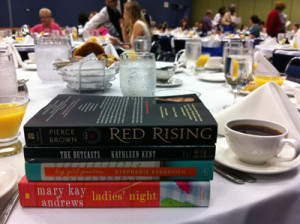
I work with ebooks at my library. I understand how our patrons can access them, I understand how they can download them, and I understand how they can read them. I never really understood how we have them—what complicated system of money, technology, and time makes it all possible. PLA’s “Long E-Overdue” program on Saturday shed some light on this, but even more important, the session made me understand a crucial issue: How libraries have ebooks will likely (hopefully?) change before I will fully understand it how it works anyway.
The panel was moderated by Henry Bankhead, library manager for adult services at Los Gatos (Calif.) Public Library, and featured Jamie LaRue, director of Douglas County (Colo.) Libraries; Mary Minow, Follett Chair at Dominican University library school in River Forest, Illinois; and Michael Porter, president of Library Renewal.
“We are at the very beginning of a publishing revolution,” LaRue said. Creative destruction has helped create a new possibility: library managed e-content platforms. Included in the revolution is the idea of both copyright and digital rights management (DRM). Minow spoke about the difficulty that copyright creates when reselling digital material, and LaRue explained that copyright is now a corporate asset, when it should be a creative one. Porter stressed that it would behoove publishers to work with libraries on alternatives to digital rights management (DRM). Despite DRM, “it’s too easy to steal an ebook,” he said. While ebooks are the issue right now, Porter noted, the conversation concerns all media; whether it’s digital books, music, or video, “The infrastructure is all ones and zeroes,” he said.
Right now, libraries are in a middle ground, according to LaRue. We’ll still purchase ebooks as we have done in the past, but we must also investigate and experiment with new approaches. “The greatest concern I have right now is the timidity of librarians,” LaRue said. One experiment he wants to try, but has not as of yet, is a digital book display. Physical book displays are one of the best ways to circulate material, but he wants to see it replicated with ebooks. Even if libraries don’t have the time or money to invest in these types of experiments, they can take steps to help make library-managed e-content platforms become status quo. “We need more tech people in libraries,” LaRue said, suggesting libraries reach out to tech-savvy teens to offer them internships. Acquaint them with libraries now, he urged, so that when they’re older and doing amazing things with ones and zeroes, they won’t forget about us.
So when I go back to work, perhaps I should cherish the times I can help a patron navigate all the clicks it takes to download an ebook. I may not get to be so helpful later on.
T.J. SZAFRANSKI is virtual services reference librarian at Lake Villa (Ill.) District Library.


